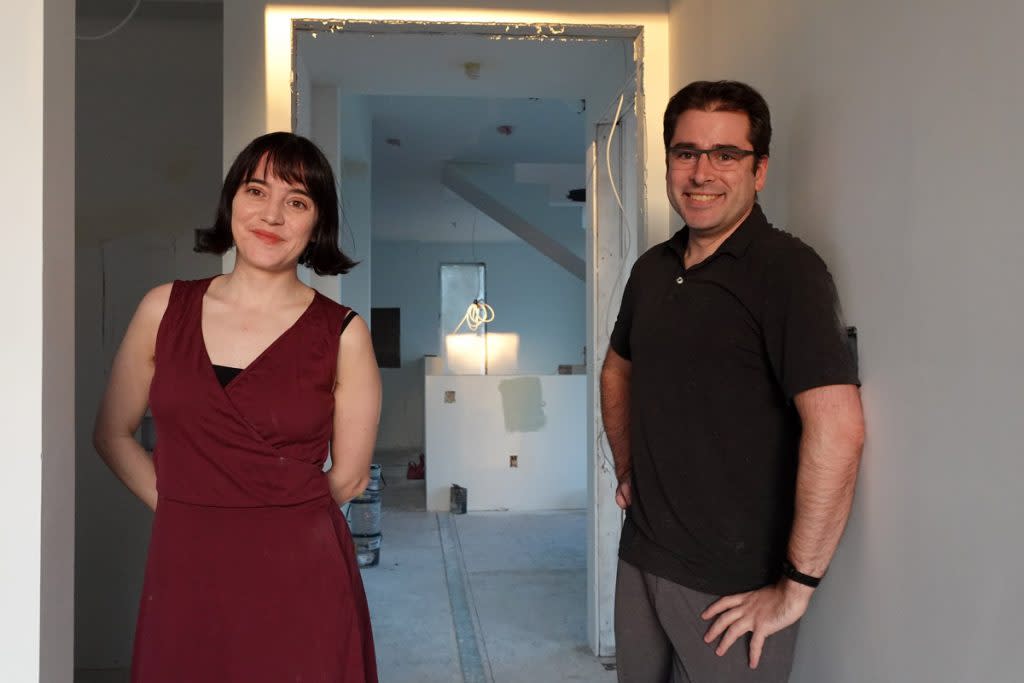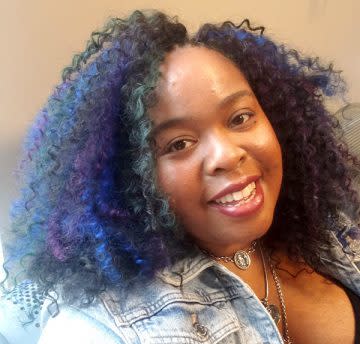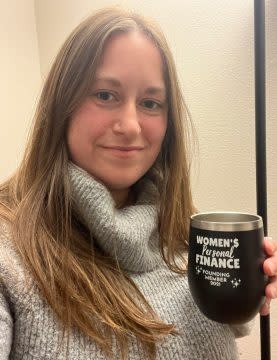Extreme Budgeting Moves that Could Help You With Your Financial Goals
Saving 80% of your income. Giving up your housing. Never buying clothes. Skipping the whole sleep thing. These are all extreme budgeting moves that could help you reach financial goals. But you need the right set of circumstances for any of them to make sense for you.
We rounded up five people who did extreme budgeting moves like these. It allowed them to secure adequate funding for their family’s health care needs, travel the world and do their part to alleviate the housing crisis. Let’s dive in.
When Money Is Tight, These 7 Resources Will Help Nearly Everyone

This couple saves 80% of their income to build their dream home – and help alleviate the housing crisis
Lillian Karabaic and Aaron Parecki found themselves with an extra property on their hands when they met. They planned to rehabilitate the home and expand it so they could live in it and have renters. However, it turned out restoring the more-than-100-year-old home made the venture financially unfeasible.
Instead, they needed to wreck and rebuild. Karabaic has lived in many different housing situations over the course of her life – including in a low-income co-op. The couple wanted to create something that felt more like that for their own community in Portland, Oregon. Because they had to do new construction anyway, they decided to build the home as a triplex. They log the journey on The House Files1.
“We didn’t want to build a custom single-family home because it seemed like a huge expense without any payoff. Plus, [it would be] fairly wasteful during a housing crisis,” Karabaic said. “We wanted the house to be a place to live – this is meant to be a forever home with aging-in-place as part of the design considerations – but also to pay for itself a little bit and build community.”
Many obstacles popped up along the way. They had to wait for a zoning law to pass that would allow them to begin construction. Then, they had to secure a custom-built loan from their local credit union, as their financing needs were unique. This is all on top of inevitable unexpected expenses that come with construction projects.
Fortunately Parecki, who works in the tech sector, has a high income. One hundred percent of it goes into savings to float the project through the unexpected. It also covers mortgage expenses during any potential periods of vacancy in the future. Karabaic is a public radio host and financial journalist, living off about $16,000 to $22,000 per year depending on her health care expenses. The rest of her salary goes toward savings. Both spouses have side hustles, like the Anomalily YouTube channel2, which provide about $22,000 worth of yearly living expenses for Parecki.
More on housing: Can’t Pay Rent? Experts Say These 5 Steps May Help You Avoid Eviction
What to read next: The Cost of Living Keeps Rising — How Are We Supposed to Live? 6 Tips to Get Ahead
Avoiding lifestyle inflation to finance a $1 million+ project
While the couple does have multiple income streams to support their dream (which just recently breached the $1 million mark in terms of expenses,) they also are careful to avoid lifestyle inflation. For example, they just moved into an accessory dwelling unit on the property that previously served as a long-term rental. They’re not uncomfortable in the smaller space, but they are careful not to wake each other up when their work schedules collide as it’s a loft setup – no doors. The move is saving them $2,000 per month on rent.
“We’ve had to avoid getting caught up in the free-spending culture of other high-income earners in Aaron’s tech circles,” Karabaic said. “Many of those colleagues spend their ridiculous salaries on Teslas or other luxury cars, expensive hobbies like a pilot’s license, eating out at fancy restaurants, or glamorous vacations.
“We wanted to take advantage of the opportunity to continue living like people who make normal salaries and save the extra for the future. Most people will never have access to jobs with this kind of salary — acting as though it is a given is a risky business. Fighting that lifestyle inflation and continuing to live a more frugal lifestyle so that we can make this project happen is an opportunity, not a sacrifice.”
This opportunity mindset has them on track to move into their new home within a year, pending any unforeseen circumstances.
This woman adopted van life to travel the world
Shalese Heard is known as The Autistic Travel Goddess3 and Neurodivergent Millionaire4. She found herself unhappy with how her rent left her unable to spend money on other things she valued, like travel. She decided to give up the housing altogether and adopt van life to travel across the country. Eventually, she took her sojourns to Europe for a while.
“In my final semester of graduate school, I bought myself a car and later had buyer’s remorse for the large purchase,” Heard said. “Because I couldn’t get out of the car loan, I had the bright idea to see if I could rent it the same way that Airbnbs are rented. I Googled, and sure enough there was a platform called Relay Rides (now Turo) that allows you to list your car for extra cash.”
Heard earned a full-time income by renting out her car at the time. She cites that vehicle as the main reason she can travel as much as she has.

What makes the sacrifice worth it
Nomadic life isn’t one of those extreme budgeting moves that’s all sunshine and roses. Giving up your housing comes with significant tradeoffs.
“What made it worth it in the end was the night I checked into my hotel in Cologne, Germany,” Heard said. “I received a text from my mother excitedly telling me to share my photos and my experiences with my grandparents.
“She reminded me that I’m the first in our family to travel internationally this extensively. My grandparents are getting to live vicariously through me. During my grandparents’ time, Black people weren’t allowed to travel this extensively. To them, I made history and changed the family tree.
“That moment in my hotel room, it all sank in. It was worth it to me when I realized just how significant this accomplishment is as a Black woman with Autism. Knowing that motivates me to manage my money well so that I can continue to travel.”
This woman’s clothing spending ban allows her to send her child to a dual language school
On March 1, 2017, Angela Rozmyn had not purchased any new clothes in weeks. She decided to drop the habit for a year. The habit stuck and turned into one of her extreme budgeting moves. Over seven years later, Rozmyn has not spent a penny on new clothing items for herself.
“I, like most millennial women, had far too much clothing and my closet was regularly overfull,” said Rozmyn, co-owner of Women’s Personal Finance5. “I dreamed of a capsule wardrobe, but I didn’t want to simply dump my whole closet and start over. I wanted to get to a much smaller wardrobe in a more sustainable and financially-feasible manner. So, I decided to wear out my current clothes before I bought any more.”
Today, she keeps the ban going by participating in Buy Nothing groups and going to clothing swaps. She also lets all her friends and family know she’d be happy to take their hand-me-downs. On occasion, when something needs mending, she takes it to her mother-in-law or grandmother. In the future, she’d like to learn these sewing skills herself.
“According to a recent Capital One survey6, millennial women spend on average over $2,000 a year on clothing, which would put my savings upwards of $14,000 or more at this point,” she said.
Our partners: 50 Easy Ways You Could Make Extra Money This Month

Spending based on your values
Rozmyn said now, most of her son’s clothes come from thrift stores or are hand-me-downs. She said her husband doesn’t spend much on clothing for himself, either. They also don’t place a high priority on expensive consumer items like new cars, furniture, the latest-greatest technology or smaller consumer items like makeup.
“Not spending on things we don’t care about means that we have more money to invest as well as spend on the things we do care about,” she said. “Those things are generally good food with friends and family and travel to visit loved ones who no longer live nearby, as well as paying for our son to go to a dual language Spanish school.”
This woman stayed up through the wee hours of the night for years to secure $200,000 in grants
Extreme budgeting moves can also be related to how you spend your time.
Sheletta Brundidge’s children are autistic, and autistic children from middle-income households often don’t get the resources they need. She aimed to find a way for her children to get everything they needed to live a happy, healthy life. Brundidge – who owns the Minneapolis-based media company Sheletta Makes Me Laugh7 – stayed up well into the night for years to research grant opportunities. With young children at home, she couldn’t do so until everyone else was asleep in bed.

One night of the week, she’d search for grants. The next night she’d vet the results to ensure they weren’t scams or inactive programs. Another night she’d write the essays, then she’d run the paperwork to the post office during the day.
It was a lot of work and often meant operating on less sleep, but in the end it paid off. She’s secured over $200,000 in grant money for her autistic children to cover those things insurance wouldn’t.
This woman delayed gratification so she could travel the world
Pauline Paquin grew up in Paris, France, where she attend business school in 2001. She had dinner with her cousin who was heading off on a year-long trip, funding the endeavor with her savings of a mere $12,000. Her cousin was traveling to destinations where she could theoretically get by on as little as $600 per month at the time, like Thailand.
Paquin thought she’d like to pursue the same path. While she was in school on an IBM scholarship, she was also earning about $1,300 per month working for the company on her days off from her studies. Her rent at the time was only about $400, and she resolved to keep the rest of her living expenses low so she could pocket as much of the remaining $900 as possible.
One of those extreme budgeting moves was difficult but worth it.
“The most drastic change was I pretty much stopped going out,” Paquin said. “If my friends wanted to hang out, I’d cook them dinner at my apartment and they could bring some drinks. A lot made fun of me for never wanting to spend $50 a night in a club. But to me, that was two days of travel in Thailand, and the trade off was really worth it.”
In addition to frugal living, she applied for travel grants – winning a number of them along the way. She also let her entire network know about her goal, receiving donations of camping gear, and free repatriation and health insurance coverage from alumni at her school. When she graduated, rather than using her personal savings to travel directly, she invested it into a small studio apartment, which she then rented out. The rental income was what ended up paying for her travels.
Paquin’s adventures could be out of a film. She did a diving tour of the second-largest barrier reef in the world in Honduras, got lost for days while camping in communist Myanmar and visited Machu Picchu with her mother.
“After you see so many museums, churches or town centers, what really makes a trip special is the people you exchange, live and laugh with,” Paquin said.

Building multiple income streams
At the end of her first one-year trip, she decided cubicle life wasn’t for her. She found a job as a hotel manager in Guatemala and worked there for three years, keeping up her frugal habits. After that, she worked in places like Spain, the UK and Morocco. In the UK, she bought a property and shared it with roommates. Their rent covered her mortgage.
She also had multiple side hustles writing travel articles, running the website Reach Financial Independence8, teaching languages online and even waitressing. The reduced expenses and multiple streams of income meant she had enough money for a global motorcycle tour that lasted two years.
She returned to Guatemala to purchase a home and run her remote business, as she missed her old home so much. Over a decade later, she lives in Florida, but she still rents out the Guatemalan home as a short-term rental and gives back to the community through various charitable efforts.
By around age 35, Paquin’s extreme budgeting moves allowed her to ease up on work.
“I do not work right now,” she said. “I have mostly stopped monetizing my blogs and although I went back to school for my CFP, I only do pro bono work so far. Living frugally was instrumental during the accumulation phase. I try to be a good steward of my money, but I am happy spending it after years of accumulation and sacrifice.”
Pittsburgh-based writer Brynne Conroy is the founder of Femme Frugality and the author of “The Feminist Financial Handbook.” She is a regular contributor to The Penny Hoarder.
Sources:
3: The Autistic Travel Goddess
8: Reach Financial Independence
This was originally published on The Penny Hoarder, which helps millions of readers worldwide earn and save money by sharing unique job opportunities, personal stories, freebies and more. The Inc. 5000 ranked The Penny Hoarder as the fastest-growing private media company in the U.S. in 2017.
